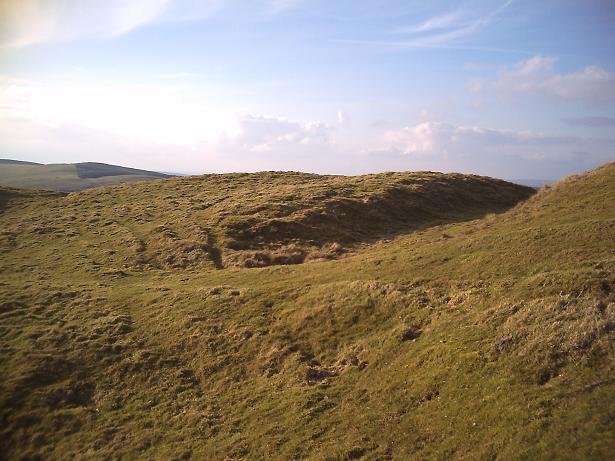
I thought these had a bit of a Charles Rennie MacKintosh feel to them.

I thought these had a bit of a Charles Rennie MacKintosh feel to them.




The dot which is just above and between the letters “a” and the “r” in “marked” is not the site. Do not attempt to go there. It is not a cup and ring marked stone instead it is a bog full of midges and clegs accessed through some nasty head high bracken and deep heather which is home to some very nasty deer ticks.
The site above the ampersand (the “&” in the “cup & ring”) is the one you want!.


These beautiful swirls were hidden under the plantation trees at the foot of the first panel. It looks like an Andy Goldsworthy creation. But much, much better.

July 2010 after some heavy rain and shortly before a catastrophic midge attack.

Just to give you an idea of size. Outcrop bearing 8 year old human male.






The two surviving cairns. Tucked into Bizzyberry’s floppy waistband. You can just make out the North entrance just below the summit in the photo.

Defensive ditches and ramparts of the fort at the North end of Bizzyberry. Outer ditch about 4 feet deep. Inner ditch around 6 feet deep.

The lower fort on Bizzyberry Hill. Outer defense ditches and ramparts.

South end of summit fort. The causeway across the rock cut ditch.

The rock cut ditch on the South side of the summit fort.


The waters of the well dribble out of the rock here. Currently frozen solid.

Wallace’s Well frozen solid. The spring comes out of the rock half way up on the right.

Approach to the North entrance of the summit fort.

Entrance and surviving rampart at North end of the summit fort.

This is the rather damp, sloping crawl in and out. The light at the far end is not the surface of the field. You have a scramble up two or three slippery feet more to get up to the ground level.
This picture gives an idea of just how massive those lintel stones are and of the scale of some of the worked blocks in the walls

The view from outside the souterrain looks down on this strange looking hillock two fields below.



Pale grass roots with drips of water at their ends hang from the roof.



The “Pegasus” carving on the left side of the fourth big lintel.

Dressed stone blocks from the “Hurley Hawkin” in the 1933 extension to Liff Parish Church Cemetery.